Migrating to a True Point-to-Multipoint Network Architecture
by Will Chang

Access Network is Complicated
The access network is a complicated segment in a service provider's network. It faces to the end users which have versatile requirements on their network connections. Some people may be happy with a slow, legacy connection as long as it works, while others look forward to the latest technology to enjoy high quality network services.
6G is being discussed now, however 4G, and even 3G, infrastructures are still there providing services to the public. Fixed networks are also mixed with different types of connection technologies, such as cable, DSL, PON and fiber.
Service providers have to keep all their facilities and optimize their network designs for each type of the access technologies. In current ethernet architectures, a hub-spoke is most used topology to aggregate traffic from endpoints (spokes) into a central office (hub). From the network's point of view, it is a point to multipoint connection (hub to spokes), but due to the limitations of optical technology, the link between hub and spoke has to be the same speed. It is not feasible to allocate various types of routers all into the hub site, so multiple intermediate aggregation routers are used to accumulate the traffic, therefore point-to-point connections are established in between.
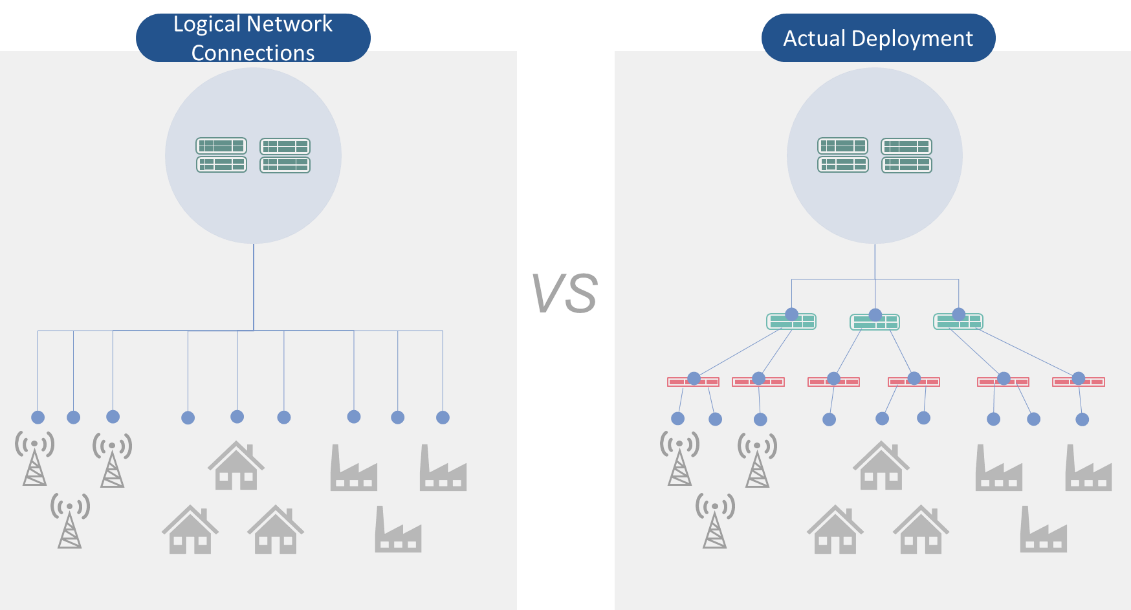
The network is built with point to point connections
The management of the network is an issue. Service providers invest a great amount of money and resources repeating the following processes in order to optimize their network configurations for their access network:
1. Survey and maintain appropriate router models for different access and aggregation scenarios
2. Deploy multiple layers of aggregation nodes to accumulate the traffic
3. Long and labor-intensive process to upgrade network
Introducing Flexibility with XR Optics
XR optics are new transceivers designed with coherent technology and introduce Digital Subcarrier Multiplexing (DSCM) to enable dynamic bandwidth allocation and a point-to-multipoint optical access network.
The concept of Subcarrier Multiplexing is not new. You probably use it every day without knowing it. When you are listening to a radio channel or watching the news using CATV, Subcarrier Multiplexing is actually taking place. You are receiving content with all of radio or TV channels available at the same time, but you are choosing to listen to or watch a single channel at a time by tuning in to the appropriate frequency. In short, the definition of Subcarrier Multiplexing is packing multiple data signals and then transmitting together, while the receiver selectively picks data it needs and ignores the rest.
The idea of DSCM is the same but applied in the digital communication world. XR optics divide a single carrier into 16 subcarriers, each having 25Gbps bandwidth. Different data could be modulated and packed in 25Gbps increments up to 400G (16x25G). At the receiver end, XR optics are tuned to the required subcarrier(s) and receive the data for it.
The bandwidth for each connection is decided by the number of subcarriers assigned to it and is adjusted dynamically.
The design of XR optics bring a more flexible, efficient and simple architecture to access networks.
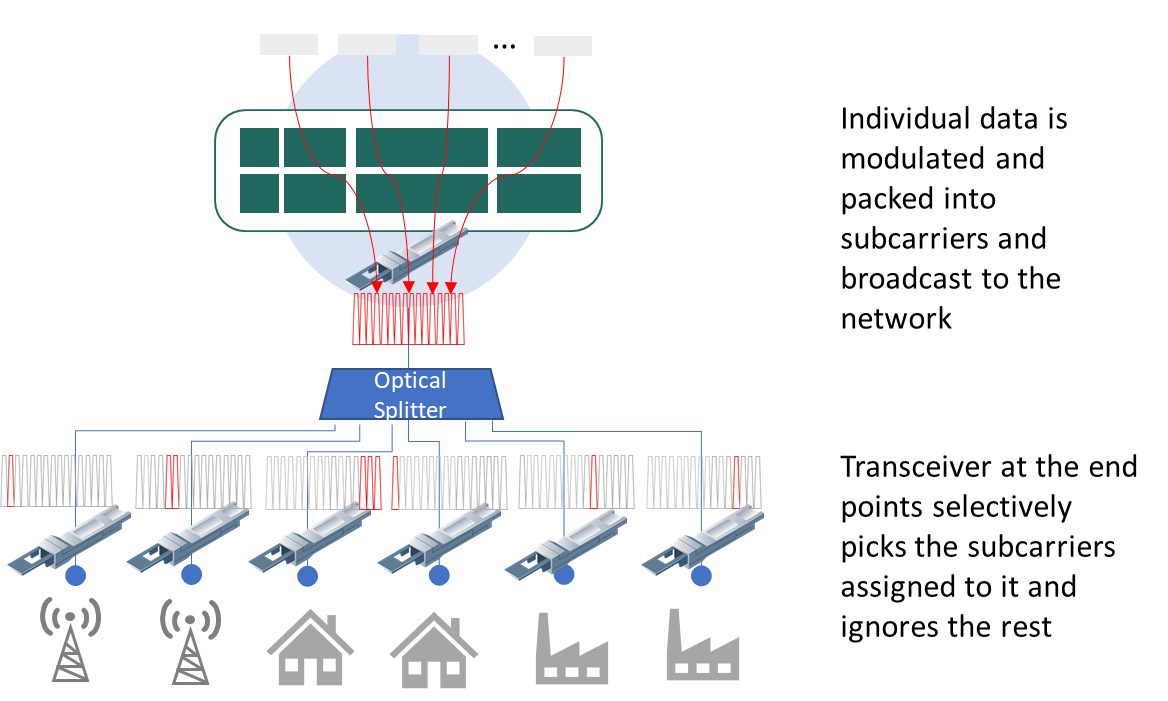
XR optics uses Subcarrier Multiplexing Technology
The Benefits of XR Optics
Simplify router configuration
Imagine a world where a router with a single type of interface is able to provide multiple service speeds. Since XR optics are capable of allocating capacity individually, one high speed port could aggregate multiple access nodes with different speeds, while some of the high speed ports are using as router to router uplink connection. A single XR transceiver can connect up to 16 nodes with each node running at any speed between 25Gbps and 400Gbps. Service providers can reduce the router models and utilize the XR optics to provide services to various low speed access technologies such as PON, mobile backhaul and enterprise networks.
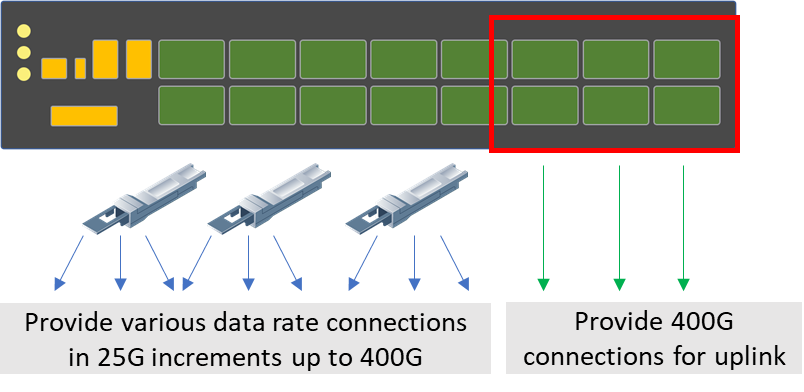
Various data rate connections with XR optics
Simplify network configuration
If there are N end points, there will be N connections between end points and intermediate aggregation routers, which leads to 2xN transceivers. The router will need to have Y uplinks which means 2xY transceivers. In total, to aggregate N end points with a single layer aggregation configuration, there will be 2xN + 2xY transceivers with an aggregation router needed.
With XR optics, there is no need for an intermediate aggregation router to aggregate traffic. The number of transceivers is also reduced to N at the end points and just one at the hub site, which means less expenses on routers and transceivers.
Take the example from the picture below. The router in the middle aggregates four end points and use one port for uplink. There will be 8 transceivers (2x4) in downlink and 2 transceivers (2x1) in uplink needed plus one router. While the same configuration could be done by 5 (4+1) XR optics without any intermediate router.
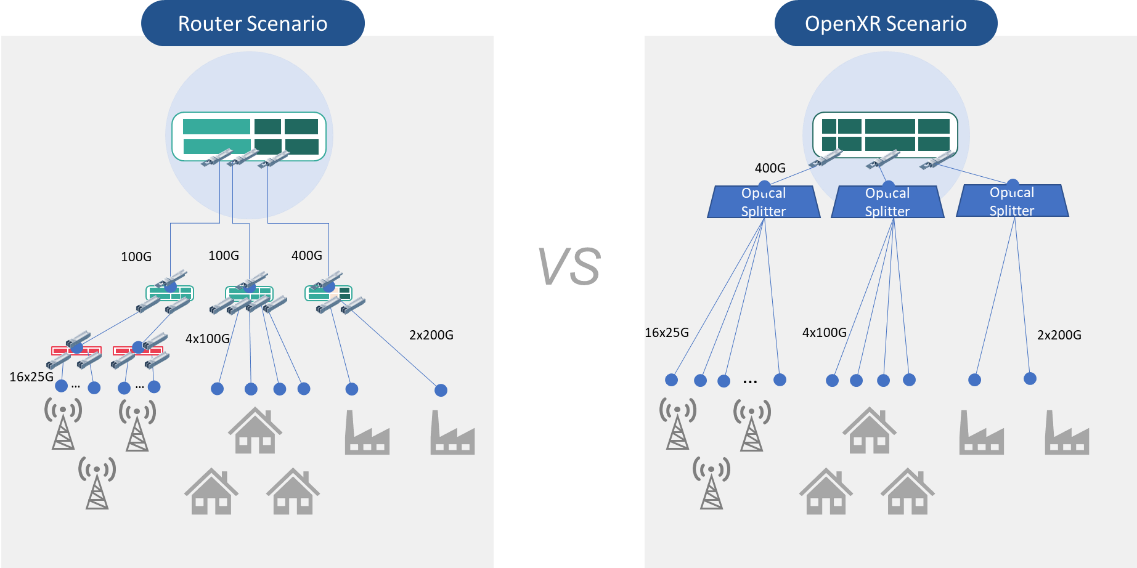
XR optics enables point to multipoint deployment without intermediate routers
Simplify network upgrades
Access technologies is changing and the bandwidth demand is increasing every couple of years. XR optics provides an approach to upgrade node without changing the entire network.
• If bandwidth of a node is not enough, simply allocate more subcarriers to an end node.
• If all the subcarriers are used up, add one more XR transceiver at the hub site to provide more subcarriers without touching the configuration at end nodes.
• And if higher speed technology is available, XR optics is backward compatible since the same 25Gbps subcarrier is used in different generation of XR optics.
Service providers no longer need to upgrade a whole bunch of new equipment and lay out a 3 to 5 year plan just to upgrade each site one by one. Every node could be upgrade individually and independently.
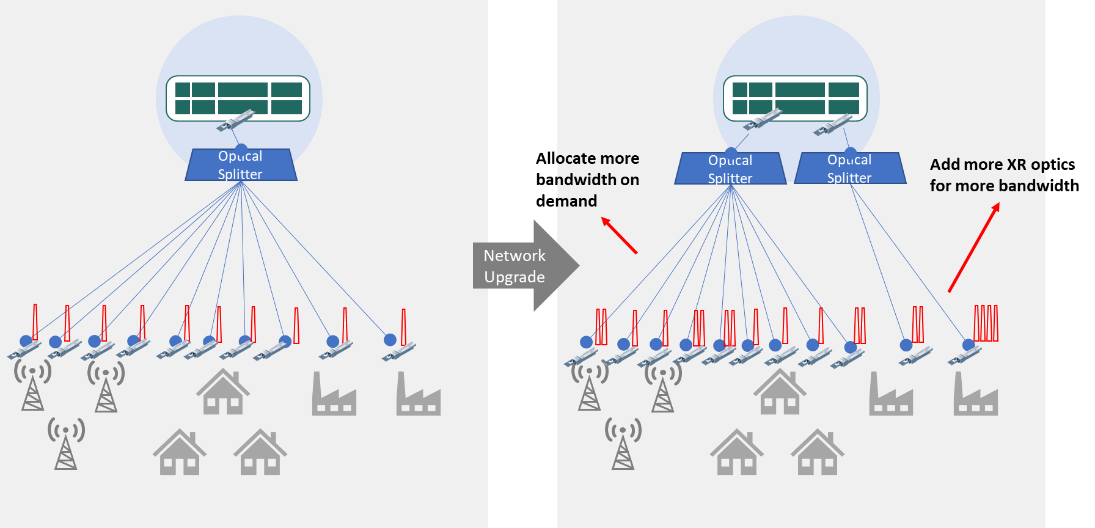
No upgrade at end points is needed to increase bandwidth
The Challenges of XR Optics
Although there are many benefits to adopting XR Optics, there are still some challenges.
The most obvious one is the initial investment needed to migrate the network with XR solution. The router at each end point will need to be upgraded in order to have the 400G QSFP-DD interfaces for using XR Optics. Hopefully, there will be lower speed interfaces support in the future.
The other challenge is the ecosystem. The key factor for a new technology to be successful is the support from many vendors and service providers. With more vendors embracing the technology, the costs can be lowered and the market can grow bigger.
The XR Optics technology was introduced by Infinera, and Open XR Optics Forum was founded in 2021 by group of service providers, network equipment manufacturers and components to accelerate the adoption of XR optics. With the effort of OpenXR Optics Forum, we might expect more and more vendors to join.
Summary
XR optics is an innovative technology that break the constraint of current network implementation and enables a sustainable and flexible service network. The Open XR Optics forum is the MSA (multi-source agreement) working group that defines the XR standard and the specifications of management framework and ensure an open and interoperable ecosystem of vendors to facilitate the adoption of XR optics.
UfiSpace is a part of the Open XR Optics forum and has started the validation of XR optics with our 400G platforms. If you are interested a demo or more information about our platforms which support XR optics, please contact our sales team.
